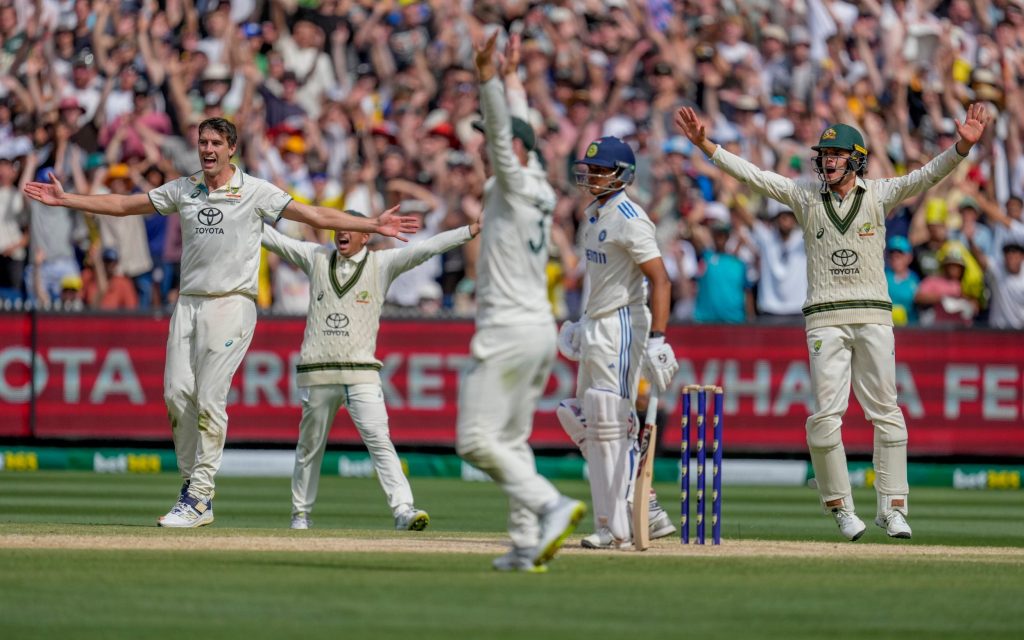
Searching the internet for stories about reform of the International Cricket Council, or the structure of international cricket, discloses that for the best part of 15 years talking heads have been demanding restructuring of the game – and particularly its fixture lists.
As all cricket lovers know, in that time matters have become worse, thanks to the proliferation of T20 leagues and international fixtures. As I have noted before, professional cricketers have a limited shelf life. Nobody can blame them for seeking to make as much money as they can while they can. However, this has had far-reaching effects on the game, and profoundly threatens a vital part of it: Test cricket.
Last week the World Cricketers’ Association called for wholesale reform of the ICC. It demanded, among other things, improved distribution of revenues, strictly defined windows when international fixtures could be played, and better leadership. The last seems to imply a leadership that conforms with the wishes of the WCA, a body that India – now in financial, if not moral, terms the powerhouse of cricket – refuses to admit exists. To those who recall Britain before Mrs Thatcher, this has familiar resonances: a trade union demanding a better share-out of the loot the bosses are making. That is not to say, however, that the WCA does not have a point.
Certain Indians have become prodigiously rich because a section of that country’s 1.4 billion inhabitants cannot get enough T20 cricket. Nearly a year ago Houlihan Lokey, an American investment bank, valued the Indian Premier League at $16.4 billion (£12.7 billion). They can afford to pay handsome sums to the world’s best cricketers to play in it. Therefore, some who might make good Test cricketers do not participate in the highest form of the game, and seldom go near the domestic first-class game. Both suffer accordingly.

Last year South Africa sent effectively a second XI to play two Tests in New Zealand. Predictably, the tourists were thrashed in both, in the first by 281 runs and in the second by seven wickets. Yet, again because of bizarre international fixture lists, South Africa will meet Australia at Lord’s in June in the final of the World Test Championship. This is despite South Africa not having played either Australia or England, two of the world’s strongest sides, during the period in which results were assessed for this final. If, as one might equally expect, Australia thrash South Africa within three days, it would make a mockery of the whole competition, as well as leaving MCC short of revenues.
To avoid a repeat of such an outcome, the WCA wants a two-division Test championship. It is hard to think of a more effective way of killing Test cricket altogether, or at least just reducing it to a permanent triangular tournament between England, Australia and India. That, though, often seems like something the ICC has unwittingly been trying to do for years. That is thanks to what the WCA has called the “chaotic, inconsistent and confusing” fixtures schedule that has evolved because of the demands of T20 and the desire of governing bodies and players to trouser as much cash as possible. To enhance competitiveness, the WCA also wants divisions in 50 and 20-over cricket.
The WCA’s worries about the financial dominance of India, England and Australia is merely another way of protesting against the financial inadequacies of the other nine full members of the ICC, six of which are in the World Test Championship (Bangladesh, New Zealand, Pakistan, South Africa, Sri Lanka and West Indies). In each of these countries people have been driven away from first-class and Test cricket. Indeed, they have been driven away from first-class cricket in Australia and India too, and the turnout for County Championship matches here (the 2025 edition is starting on Friday) has been declining since the 1950s and is now largely pitiful. Yet without meaningful first-class cricket – by which I mean domestic first-class cricket that features international cricketers, both to inspire and educate younger players and pull in crowds – we cannot nurture a decent Test team. However, the Championship has withered because it is not marketed or promoted.
National boards must decide what they want. Perhaps some do not want to play Test cricket: in which case there is no point in trying to make them. But if some do, because when they visit one of the ‘big three’ nations they rake in much helpful cash, then they should be encouraged to do so, provided they take steps to be competitive. Regulating international fixture lists to allow for domestic first-class and Test cricket would certainly be helpful; but, as Kerry Packer would tell you, there is nothing to prevent new versions of the IPL springing up elsewhere (Americans are trying) and financially mesmerising yet more players.
As I have often written, this is a comprehensive argument for two codes in cricket, red-ball and white-ball, which domestically could be managed by single national governing bodies. Although a free-market ideology underpins the current problems – because no one can force hugely rich IPL magnates to shower poor relations with their money – an element of domestic cross-subsidy would be possible if individual boards use revenues from white-ball matches to subsidise red-ball matches. But I have been advancing this argument for years, and the ostrich-like pose of too many governing bodies suggests no one wants to listen.
However, the day will come when spectators will have had enough of one mindless slogfest after another and, if there is no fixture reform, players will be exhausted. Also, the vast earnings depend on sponsors, who will tail off as audiences do. It is easy to spot a golden egg, but the goose is in danger of being roasted and eaten. It should also worry head-in-the-sand English administrators that no one in the WCA is talking about The Hundred, in which various British-based plutocrats have made significant investments, and whose life may prove to be painfully short. But never mind that absurdity: Test cricket is dying, and may be already beyond salvation, unless the ICC chooses to save it.

Searching the internet for stories about reform of the International Cricket Council, or the structure of international cricket, discloses that for the best part of 15 years talking heads have been demanding restructuring of the game – and particularly its fixture lists.
As all cricket lovers know, in that time matters have become worse, thanks to the proliferation of T20 leagues and international fixtures. As I have noted before, professional cricketers have a limited shelf life. Nobody can blame them for seeking to make as much money as they can while they can. However, this has had far-reaching effects on the game, and profoundly threatens a vital part of it: Test cricket.
Last week the World Cricketers’ Association called for wholesale reform of the ICC. It demanded, among other things, improved distribution of revenues, strictly defined windows when international fixtures could be played, and better leadership. The last seems to imply a leadership that conforms with the wishes of the WCA, a body that India – now in financial, if not moral, terms the powerhouse of cricket – refuses to admit exists. To those who recall Britain before Mrs Thatcher, this has familiar resonances: a trade union demanding a better share-out of the loot the bosses are making. That is not to say, however, that the WCA does not have a point.
Certain Indians have become prodigiously rich because a section of that country’s 1.4 billion inhabitants cannot get enough T20 cricket. Nearly a year ago Houlihan Lokey, an American investment bank, valued the Indian Premier League at $16.4 billion (£12.7 billion). They can afford to pay handsome sums to the world’s best cricketers to play in it. Therefore, some who might make good Test cricketers do not participate in the highest form of the game, and seldom go near the domestic first-class game. Both suffer accordingly.

Last year South Africa sent effectively a second XI to play two Tests in New Zealand. Predictably, the tourists were thrashed in both, in the first by 281 runs and in the second by seven wickets. Yet, again because of bizarre international fixture lists, South Africa will meet Australia at Lord’s in June in the final of the World Test Championship. This is despite South Africa not having played either Australia or England, two of the world’s strongest sides, during the period in which results were assessed for this final. If, as one might equally expect, Australia thrash South Africa within three days, it would make a mockery of the whole competition, as well as leaving MCC short of revenues.
To avoid a repeat of such an outcome, the WCA wants a two-division Test championship. It is hard to think of a more effective way of killing Test cricket altogether, or at least just reducing it to a permanent triangular tournament between England, Australia and India. That, though, often seems like something the ICC has unwittingly been trying to do for years. That is thanks to what the WCA has called the “chaotic, inconsistent and confusing” fixtures schedule that has evolved because of the demands of T20 and the desire of governing bodies and players to trouser as much cash as possible. To enhance competitiveness, the WCA also wants divisions in 50 and 20-over cricket.
The WCA’s worries about the financial dominance of India, England and Australia is merely another way of protesting against the financial inadequacies of the other nine full members of the ICC, six of which are in the World Test Championship (Bangladesh, New Zealand, Pakistan, South Africa, Sri Lanka and West Indies). In each of these countries people have been driven away from first-class and Test cricket. Indeed, they have been driven away from first-class cricket in Australia and India too, and the turnout for County Championship matches here (the 2025 edition is starting on Friday) has been declining since the 1950s and is now largely pitiful. Yet without meaningful first-class cricket – by which I mean domestic first-class cricket that features international cricketers, both to inspire and educate younger players and pull in crowds – we cannot nurture a decent Test team. However, the Championship has withered because it is not marketed or promoted.
National boards must decide what they want. Perhaps some do not want to play Test cricket: in which case there is no point in trying to make them. But if some do, because when they visit one of the ‘big three’ nations they rake in much helpful cash, then they should be encouraged to do so, provided they take steps to be competitive. Regulating international fixture lists to allow for domestic first-class and Test cricket would certainly be helpful; but, as Kerry Packer would tell you, there is nothing to prevent new versions of the IPL springing up elsewhere (Americans are trying) and financially mesmerising yet more players.
As I have often written, this is a comprehensive argument for two codes in cricket, red-ball and white-ball, which domestically could be managed by single national governing bodies. Although a free-market ideology underpins the current problems – because no one can force hugely rich IPL magnates to shower poor relations with their money – an element of domestic cross-subsidy would be possible if individual boards use revenues from white-ball matches to subsidise red-ball matches. But I have been advancing this argument for years, and the ostrich-like pose of too many governing bodies suggests no one wants to listen.
However, the day will come when spectators will have had enough of one mindless slogfest after another and, if there is no fixture reform, players will be exhausted. Also, the vast earnings depend on sponsors, who will tail off as audiences do. It is easy to spot a golden egg, but the goose is in danger of being roasted and eaten. It should also worry head-in-the-sand English administrators that no one in the WCA is talking about The Hundred, in which various British-based plutocrats have made significant investments, and whose life may prove to be painfully short. But never mind that absurdity: Test cricket is dying, and may be already beyond salvation, unless the ICC chooses to save it.








